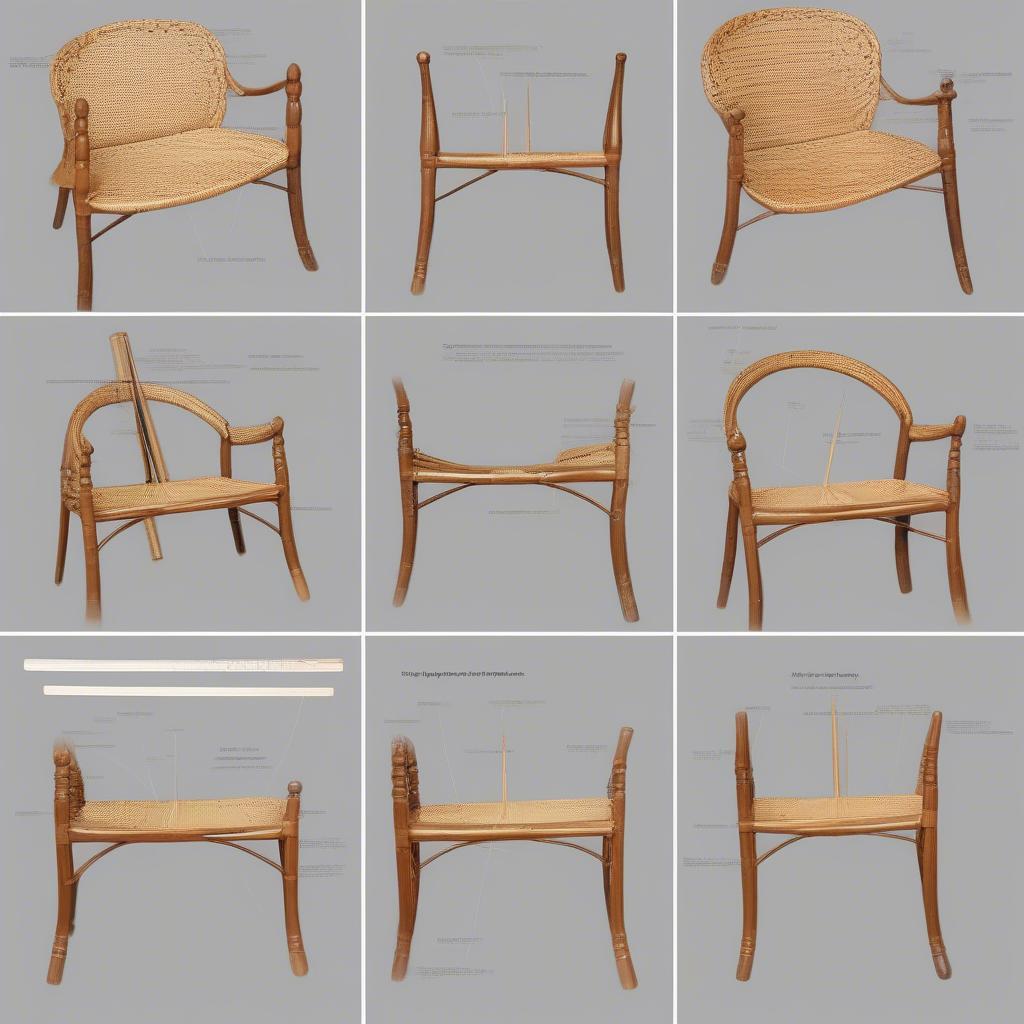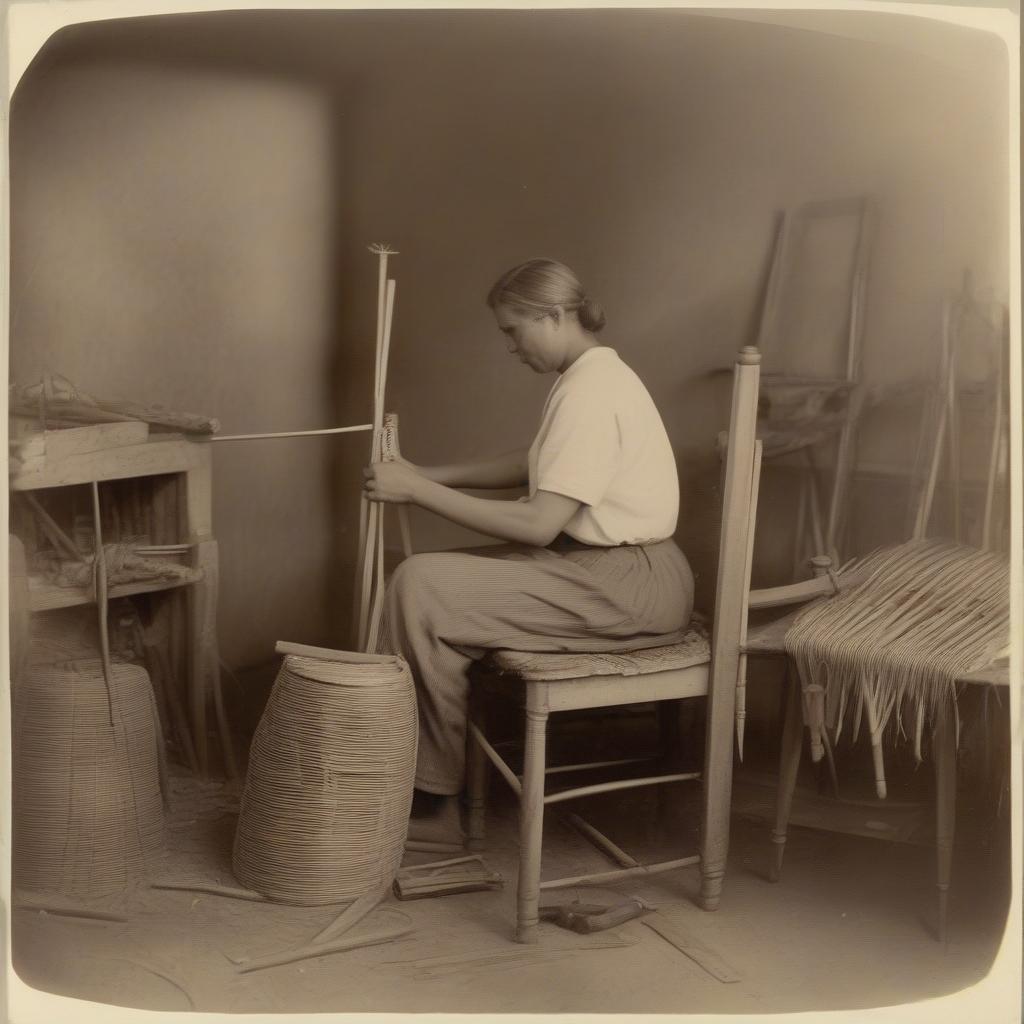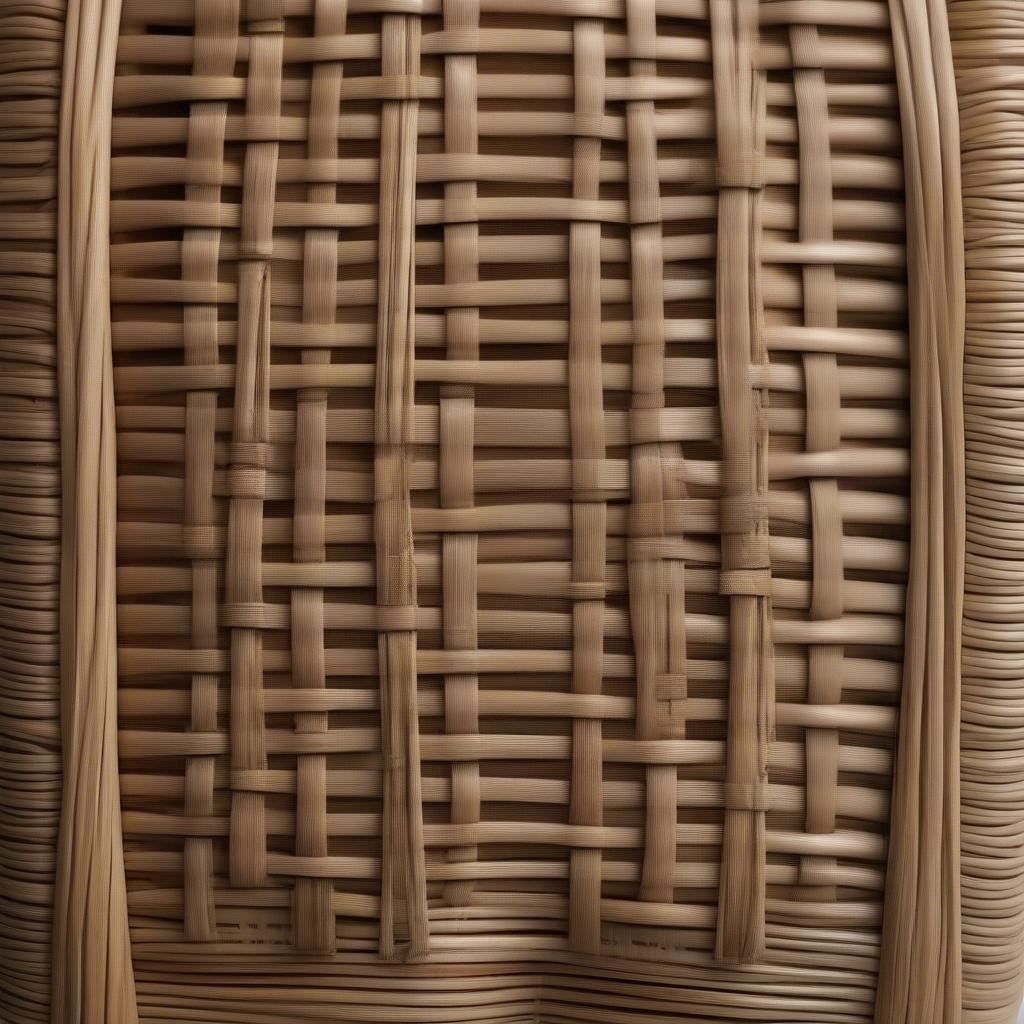Weave Chair
Weaving Cane Chair Back: A Comprehensive Guide
Weaving a cane chair back is a rewarding craft that blends traditional techniques with artistic expression. This guide explores the intricate process of restoring and creating beautiful cane chair backs, from choosing the right materials to mastering the weaving patterns.  Cane Chair Back Weaving Process
Cane Chair Back Weaving Process
Understanding Cane and Its Uses in Chair Backs
Cane, a natural material derived from the rattan palm, has been used for centuries in furniture making. Its flexibility, strength, and unique aesthetic make it an ideal choice for chair backs, offering both comfort and visual appeal. Different types of cane are available, each suited for specific weaving patterns and chair styles. Understanding these variations is crucial for achieving a professional and durable result. For instance, flat reed cane is commonly used for larger weaves, while binder cane is essential for securing the edges and adding structural integrity. Choosing the appropriate cane type depends on the chair’s design, the desired pattern, and the level of durability required.
What makes cane so popular? Its natural breathability contributes to comfortable seating, especially in warmer climates. Beyond its practicality, cane also brings a touch of timeless elegance to any space. It complements a variety of interior design styles, from traditional to contemporary, adding a touch of natural texture and visual interest.
Preparing for the Weaving Process
Before embarking on the weaving process, proper preparation is essential. This includes gathering the necessary tools, such as a cane awl, pegs, and a mallet. The chair frame should be thoroughly cleaned and inspected for any damage.  Preparing the Chair Frame for Cane Weaving
Preparing the Chair Frame for Cane Weaving
Measuring and cutting the cane accurately is crucial for achieving a consistent weave. Soaking the cane in warm water for a period before weaving makes it pliable and easier to work with, preventing breakage and ensuring a tighter, more uniform finish. This step is especially important for intricate patterns.
how to weave a wrought iron chair
Mastering the Weaving Techniques for a Chair Back
There are several cane weaving patterns, each with its own level of complexity and aesthetic appeal. From the simple yet elegant seven-step weave to the more intricate herringbone pattern, choosing the right pattern depends on the chair’s design and personal preference. Learning the basic weaving techniques, such as the strand and loop method, provides a foundation for mastering more complex designs.
The seven-step weave is a popular choice for beginners, offering a straightforward yet attractive pattern. More experienced weavers might opt for the herringbone or basketweave patterns, which add a touch of sophistication and visual depth to the chair back. No matter the chosen pattern, patience and attention to detail are key to achieving a professional-looking finish.
How to Choose the Right Cane for Your Chair Back?
Choosing the right cane for your chair back is paramount. Consider the chair’s style, the desired weave pattern, and the level of durability required. Pre-woven cane mesh is a convenient option for simpler repairs or for those new to cane weaving. For more intricate designs or unique chair backs, hand-weaving with individual cane strands offers greater flexibility and control.
What are the Different Types of Cane Weaving Patterns?
Various cane weaving patterns cater to different aesthetics and skill levels. The seven-step weave, a common choice for beginners, offers a relatively simple yet visually appealing design. For more experienced weavers, patterns like the herringbone or basketweave provide an opportunity to showcase intricate craftsmanship and create visually stunning chair backs.
weaving a chair seat crossword clue
Finishing Touches and Maintenance
Once the weaving is complete, securing the ends of the cane and adding a finishing border ensures a neat and polished look. Proper maintenance is essential for preserving the beauty and longevity of the cane chair back. Regular dusting and occasional cleaning with a damp cloth help prevent dirt buildup and maintain the cane’s natural luster. Avoid exposing the chair to excessive moisture or direct sunlight, as this can weaken the cane over time.
weaving a flat reed rocking chair
“Cane weaving is a timeless craft,” says renowned furniture restorer, Amelia Carter, “requiring patience and a keen eye for detail. The result, however, is a piece of furniture that is both beautiful and functional.” Another expert, John Miller, a master weaver with decades of experience, adds, “Choosing the right cane is crucial for the project’s success. Consider the chair’s style, the desired weave, and the level of durability needed.”
In conclusion, weaving a cane chair back is a fulfilling project that combines traditional techniques with creative expression. By understanding the nuances of cane selection, preparation, and weaving techniques, you can restore or create a stunning piece of furniture that will be cherished for years to come. Remember, patience and attention to detail are key to achieving a beautiful and durable Weaving Cane Chair Back.  Finished Cane Chair Back
Finished Cane Chair Back
FAQ
- What is the best type of cane for a beginner?
- How long does it take to weave a chair back?
- What tools are needed for cane weaving?
- How do I care for my cane furniture?
- Where can I buy cane materials?
- Can I repair a broken cane chair back myself?
- What are some common mistakes to avoid when weaving cane?
If you need further assistance, please contact our 24/7 customer service team at Hotline: +84 388 951 999, or visit our offices in Hanoi, Vietnam, or Tech Avenue, Suite 12, San Francisco, CA 94105, USA.
